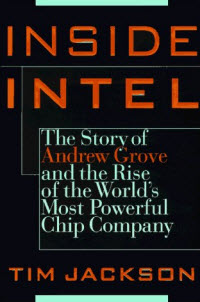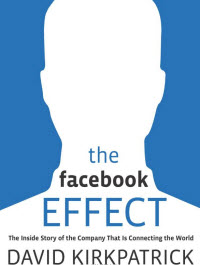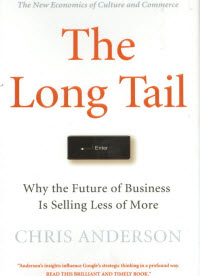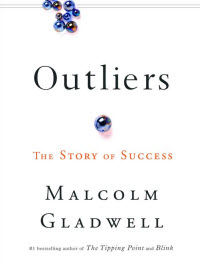 16. Inside Intel: Andy Grove and the Rise of the World’s Most Powerful Chip Company by Tim Jackson (1997). Tech business books were a rarity when Jackson swooped in from England and gave Silicon Valley a once over. He chose to focus on Intel in the waning years of Grove’s reign at the world’s biggest chip maker. Since Grove chose not to cooperate in the book, it is skewed toward stories about him that are related by other people, including a number who hated or feared him. The good thing about the book is that it spurred Grove and others to write tales from their own point of view. It’s an unvarnished book that shows the consequences of aggressive marketing and tough business tactics.
16. Inside Intel: Andy Grove and the Rise of the World’s Most Powerful Chip Company by Tim Jackson (1997). Tech business books were a rarity when Jackson swooped in from England and gave Silicon Valley a once over. He chose to focus on Intel in the waning years of Grove’s reign at the world’s biggest chip maker. Since Grove chose not to cooperate in the book, it is skewed toward stories about him that are related by other people, including a number who hated or feared him. The good thing about the book is that it spurred Grove and others to write tales from their own point of view. It’s an unvarnished book that shows the consequences of aggressive marketing and tough business tactics.
 17. The Facebook Effect: The Inside Story of the Company That is Connecting the World by David Kirkpatrick (2010). This tale chronicles the founding of Facebook by Mark Zuckerberg and the enormous consequences that resulted from seemingly small decisions. Those decisions moved Facebook from a dorm room to a sprawling empire with nearly a billion users. The story is probably a lot closer to the truth than Ben Mezrich’s The Accidental Billionaires, a fictionalized account of the Facebook story that became the basis of the Oscar-nominated film The Social Network. Kirkpatrick had the full cooperation of Facebook’s executives and its investors. Kirkpatrick captures the flavor of excitement that was buzzing throughout Silicon Valley during the rise of social networking. He notes how executives came and went while Zuckerberg survived. Owen Van Natta, for instance, negotiated a deal to sell Facebook to Yahoo for $1 billion, only to have the deal vetoed by the cherubic-faced Zuckerberg.
17. The Facebook Effect: The Inside Story of the Company That is Connecting the World by David Kirkpatrick (2010). This tale chronicles the founding of Facebook by Mark Zuckerberg and the enormous consequences that resulted from seemingly small decisions. Those decisions moved Facebook from a dorm room to a sprawling empire with nearly a billion users. The story is probably a lot closer to the truth than Ben Mezrich’s The Accidental Billionaires, a fictionalized account of the Facebook story that became the basis of the Oscar-nominated film The Social Network. Kirkpatrick had the full cooperation of Facebook’s executives and its investors. Kirkpatrick captures the flavor of excitement that was buzzing throughout Silicon Valley during the rise of social networking. He notes how executives came and went while Zuckerberg survived. Owen Van Natta, for instance, negotiated a deal to sell Facebook to Yahoo for $1 billion, only to have the deal vetoed by the cherubic-faced Zuckerberg.
 18. The Long Tail: Why the Future of Business is Selling Less of More by Chris Anderson (2006). You can credit Chris Anderson with coming up with a way to succinctly describe the phenomenon of how the infinite shelf space of the internet and the efficiency of search engines enables obscure products to go on selling in small quantities forever. While blockbuster products get all the attention, the statistical reality is that a larger share of sales for any product category is in the “long tail” of a distribution graph, which means that companies can make a huge profit by selling a catalog of products rather than just popular items. It is easy to use the internet to find these obscure products and purchase them, as Amazon.com has so deftly demonstrated. The result for consumers is a new universe of choices and better competition. Businesses that figure out how to give consumers access to the long tail of products will prosper. It’s one story of economics that will hold you spellbound.
18. The Long Tail: Why the Future of Business is Selling Less of More by Chris Anderson (2006). You can credit Chris Anderson with coming up with a way to succinctly describe the phenomenon of how the infinite shelf space of the internet and the efficiency of search engines enables obscure products to go on selling in small quantities forever. While blockbuster products get all the attention, the statistical reality is that a larger share of sales for any product category is in the “long tail” of a distribution graph, which means that companies can make a huge profit by selling a catalog of products rather than just popular items. It is easy to use the internet to find these obscure products and purchase them, as Amazon.com has so deftly demonstrated. The result for consumers is a new universe of choices and better competition. Businesses that figure out how to give consumers access to the long tail of products will prosper. It’s one story of economics that will hold you spellbound.
 19. Free: The Future of A Radical Price by Chris Anderson (2009). Freemium has become the battle cry of a whole generation of app and game publishers who are disrupting the purveyors of ordinary software or console games. Anderson followed up on his The Long Tail by following up on its impact and how businesses can profit more by giving things away than they can by charging for them. Free, or freemium, is a business strategy that has come into its own in the age of the internet, when competition has been flattered and prices have cratered like never before. You have to be a student of Ray Kurzweil (see below) to see the impact of exponential technologies. A transistor that cost $10 in 1961 now is part of an Intel chip with two billion transistors that sell for $300 (making the price per transistor virtually free, or 0.000015 cents). Companies have a recognized the power of freemium business models have because monumental. They include Google, Facebook, Zynga, Twitter, and a host of other internet firms. The book’s appendix has a bunch of different variations on giving something away for free and charging for something else.
19. Free: The Future of A Radical Price by Chris Anderson (2009). Freemium has become the battle cry of a whole generation of app and game publishers who are disrupting the purveyors of ordinary software or console games. Anderson followed up on his The Long Tail by following up on its impact and how businesses can profit more by giving things away than they can by charging for them. Free, or freemium, is a business strategy that has come into its own in the age of the internet, when competition has been flattered and prices have cratered like never before. You have to be a student of Ray Kurzweil (see below) to see the impact of exponential technologies. A transistor that cost $10 in 1961 now is part of an Intel chip with two billion transistors that sell for $300 (making the price per transistor virtually free, or 0.000015 cents). Companies have a recognized the power of freemium business models have because monumental. They include Google, Facebook, Zynga, Twitter, and a host of other internet firms. The book’s appendix has a bunch of different variations on giving something away for free and charging for something else.
 20. Outliers: the Story of Success by Malcolm Gladwell (2008).With books such as The Tipping Point and Blink, Malcolm Gladwell has shown that he can draw connections that no one else can see. In Outliers, Gladwell studied a bunch of successful people and found what tied them together. He concluded that we pay too much attention to what successful people like Bill Gates are like, and too little attention to where they are from. Important factors include their culture, their family, their generation, their experiences and their training. Gladwell observes that the common link between Gates and Bill Joy, the co-founder of Sun Microsystems, is that they got more than 10,000 hours of training writing code before they undertook their most ambitions creations. Nobody ever makes it big simply by being a genius. It takes a village to raise somebody brilliant. And this book makes you ask the question. Have you got your 10,000 hours of training in?
20. Outliers: the Story of Success by Malcolm Gladwell (2008).With books such as The Tipping Point and Blink, Malcolm Gladwell has shown that he can draw connections that no one else can see. In Outliers, Gladwell studied a bunch of successful people and found what tied them together. He concluded that we pay too much attention to what successful people like Bill Gates are like, and too little attention to where they are from. Important factors include their culture, their family, their generation, their experiences and their training. Gladwell observes that the common link between Gates and Bill Joy, the co-founder of Sun Microsystems, is that they got more than 10,000 hours of training writing code before they undertook their most ambitions creations. Nobody ever makes it big simply by being a genius. It takes a village to raise somebody brilliant. And this book makes you ask the question. Have you got your 10,000 hours of training in?
